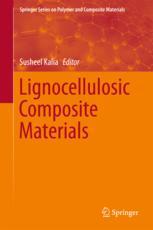

Most ebook files are in PDF format, so you can easily read them using various software such as Foxit Reader or directly on the Google Chrome browser.
Some ebook files are released by publishers in other formats such as .awz, .mobi, .epub, .fb2, etc. You may need to install specific software to read these formats on mobile/PC, such as Calibre.
Please read the tutorial at this link: https://ebookbell.com/faq
We offer FREE conversion to the popular formats you request; however, this may take some time. Therefore, right after payment, please email us, and we will try to provide the service as quickly as possible.
For some exceptional file formats or broken links (if any), please refrain from opening any disputes. Instead, email us first, and we will try to assist within a maximum of 6 hours.
EbookBell Team

0.0
0 reviewsThis book comprehensively summarizes important aspects of research in the active field of lignocellulosic (polymer) composites, including polymer materials from or containing cellulose, hemicellulose and lignin. It describes how these materials can be produced from forest products and natural fibers from sources such as jute, flax, sisal, and many more, and even from agricultural residues (like wheat straw, corn stover, or sugarcane bagasse). In times of high demand for renewable green materials, lignocellulosic materials from organic matter produced by trees, shrubs and agricultural crops present a highly attractive feedstock.
The international authors explain different treatment and fabrication methods for the production of lignocellulosic materials. Other chapters address the properties of these green materials or illustrate specific applications, ranging from food packaging and household products to adsorbents and even conductive polymer composites. In this way, this book offers a broad and comprehensive overview over the entire field of lignocellulosic composite materials.